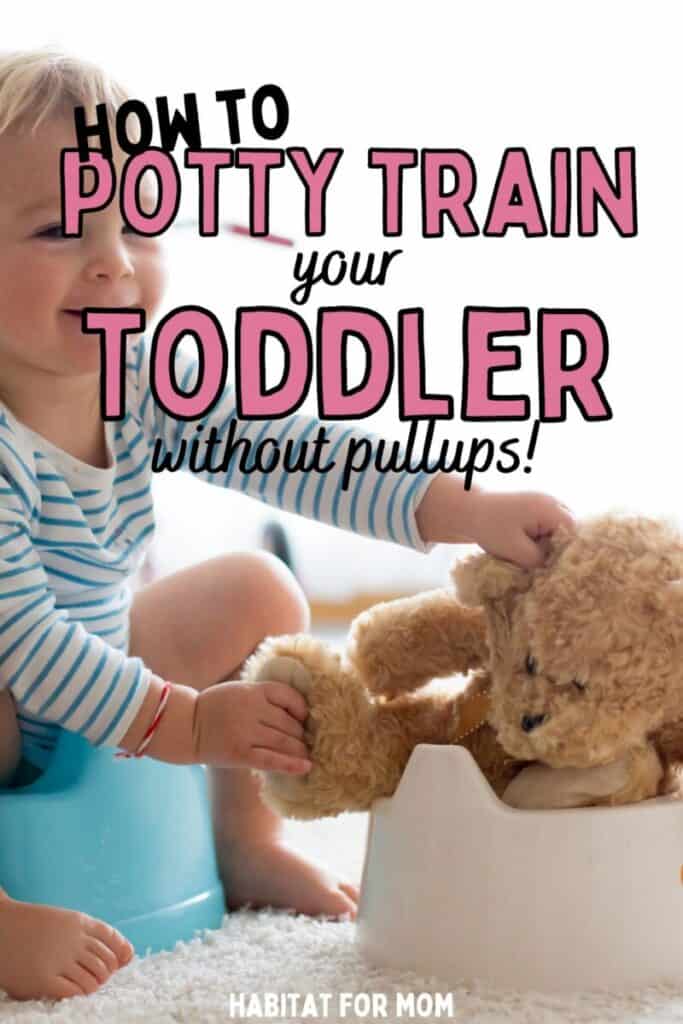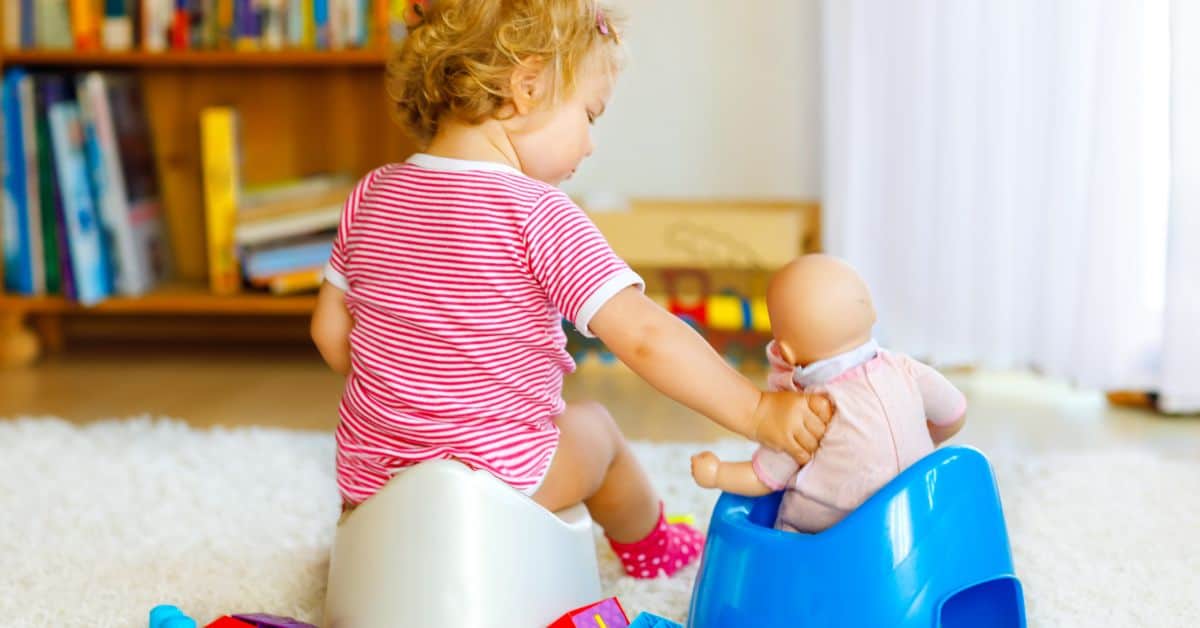This post contains affiliate links.
Potty training is a big milestone for toddlers and parents alike. It can also be a challenging and frustrating process, especially if you rely on disposable pull ups to help your child transition from diapers to underwear.
Pull ups are convenient and easy to use, but they can also delay your child’s potty training progress and create confusion and dependency.
Here are some reasons why you should avoid using pull ups and some tips on how to potty train your toddler without them.

Why You Should Skip the Pull Ups
Pull ups are designed to look and feel like underwear, but they also have the absorbency and leak protection of diapers.
This can send mixed signals to your toddler, who may not understand the difference between pull ups and underwear or the purpose of using the toilet.
Pull ups can also make your child feel comfortable and dry even when they wet themselves, which reduces their motivation to learn bladder control and recognize the cues of needing to go.
Additionally, pull ups can be costly and wasteful, as you may end up using more of them than diapers.

How to Potty Train Without Pull Ups
If you want to potty train your toddler without using pull ups, you need to be prepared, patient and consistent.
Here are some steps you can follow to make the process easier and more successful.
- Choose a good time to start. Potty training requires a lot of attention and commitment from both you and your child, so make sure you choose a time when you are both ready and relaxed. Avoid starting when there are major changes or disruptions in your child’s life, such as moving, traveling, starting preschool or welcoming a new sibling.
- Get the right equipment. You will need a potty chair or seat that fits your child’s size and comfort level, as well as plenty of underwear that your child likes and can easily pull up and down. You may also want to get some waterproof mattress pads, training pants or liners for extra protection during naps and nighttime.
- Set a routine. Establish a regular schedule for taking your child to the potty, such as every hour or after meals and snacks. You can also use a timer or an app to remind you and your child when it’s time to go. Encourage your child to sit on the potty for a few minutes, even if they don’t have to go, and praise them for trying.
- Watch for signs. Learn to recognize the signs that your child needs to use the potty, such as squirming, holding their crotch, crossing their legs or saying they have to go. When you notice these signs, act quickly and take your child to the potty. Don’t ask them if they need to go, as they may say no or not realize it until it’s too late.
- Reward success. Celebrate every time your child uses the potty successfully, whether it’s a drop or a full bladder. You can use verbal praise, stickers, stamps, books or small toys as rewards. Avoid using food or candy as rewards, as this can create unhealthy habits and expectations.
- Handle accidents calmly. Accidents are inevitable and normal during potty training, so don’t get angry or frustrated with your child when they happen. Instead, reassure them that it’s okay and that they will do better next time. Help them clean up and change into fresh underwear, and remind them to use the potty when they feel the urge.
- Be consistent. Potty training without pull ups requires consistency and persistence from both you and your child. Don’t switch back and forth between pull ups and underwear, as this can confuse your child and prolong the process. Stick to your routine and expectations, even when you are out of the house or during special occasions. If you need to travel or stay overnight somewhere, bring along your child’s potty seat or chair and some extra underwear.



